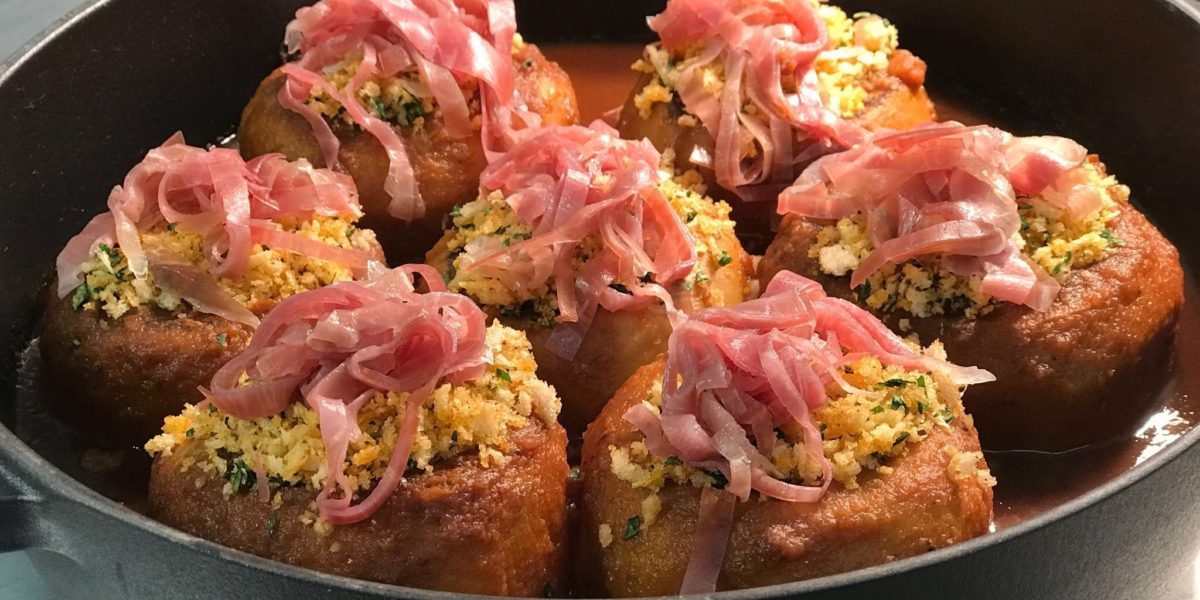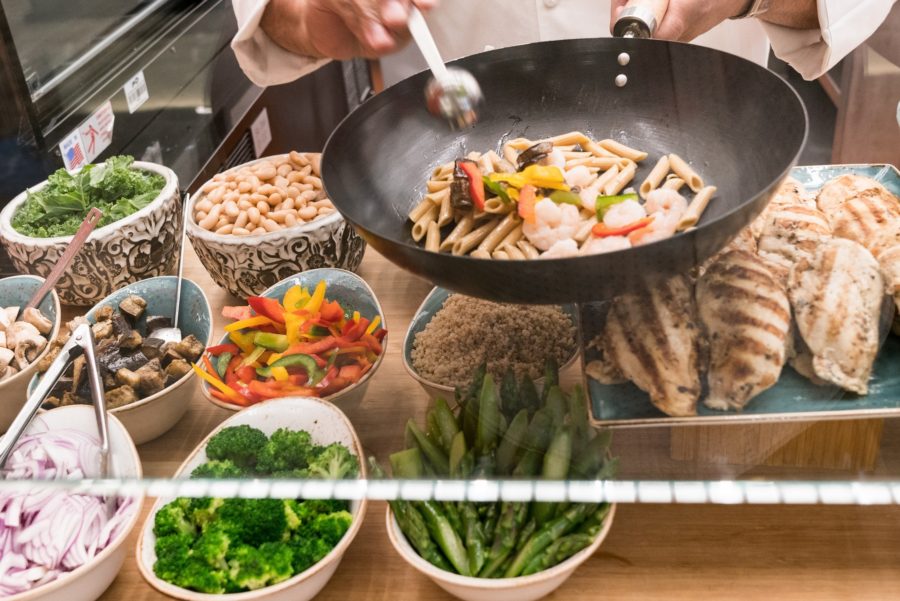
Building a healthy menu from scratch
Your customers—from little kids to grandparents—are more invested in taking care of themselves with the help of a nutrient-rich, whole-ingredient, wellness-focused diet than ever before. They’ve made the connection that food can be medicine. Here are a few ways to incorporate the latest, tastiest health-forward foods onto your menu, building from the ground up.
The healthcare market has been on the forefront of making the “food as medicine” connection and reflecting changes on what’s being offered. Cary Neff, VP of corporate culinary services at Morrison Healthcare, predicts two major areas of growth in this arena.
“First, the efforts we’re making at Morrison to further embrace ethnic food styles and bold flavors that highlight functional ingredients—spices and whole sustainable foods that are free from unnecessary antibiotics, growth hormones, artificial flavors and colors,” Neff says. “Second, an increased movement to reduce the consumption of animal products and more use of vegetables, whole grains and plant-based proteins.”
Building on these defining principals, let’s get to the nitty gritty: Which healthy foods are right for your audience? Which ingredients are going to come in clutch when the time comes to refresh your healthy selections? Who will you work with to supply those ingredients to you? How will you present it? Read on for ideas that keep wellness in mind.

Legumes, grains, dairy alternatives
These three items have seen a big increase in interest from students and faculty at Bucknell University, according to Heather Sherwood, executive sous chef, retail.
“We offer a wide variety of legumes from chickpeas, lentils, black beans, pinto beans, kidney beans and edamame,” Sherwood says. “We’ve been offering a smashed chickpea salad as an alternative to chicken or tuna salad.”
For the past two years, Sherwood has noticed “a dramatic increase for legumes that we go through,” she says. “Our customers view these as a healthy alternative for protein without having to order meat.”
A whole world of grains—farro, freekeh, oats, barley, bulgur and quinoa—play a big role in the Commons Café, where made-to-order fresh-chopped salads, grain bowls and stir-fry are just waiting for students to customize them with the grains, plus a whole lot of veggies, too.
Dairy alternatives grew from a desire to include everyone at the condiments table of all the retail locations, Sherwood says. Dairy-free milk alternatives, vegan cheeses, dairy-free yogurts and vegan spreads are always available, and prominently so.
Combining the wellness power of whole grains, greens and fish, the salmon quinoa patty holds its own against beef burgers at a location in Bucknell’s South Commons. It’s made with roasted salmon, cooked quinoa, egg whites, cooked kale, onions, spices and a dollop of Dijon mustard (for that certain something that chefs know only Dijon can add).

Doing even more with vegetables
Plant-based food is widely regarded as a sensible—even inevitable—food trend that’s here to stay. The University of North Texas (UNT) dining team has been hip to this fact for a while now—they’re the ones who pioneered an all-vegan dining hall years ago—and they’re still pushing forward, with a focus on hyper-local hydroponic greens grown right behind the vegan dining hall.
“Students today are very keyed in to what they are consuming, compared to previous years,” says Peter Balabuch, UNT director of resident dining. “They value quality ingredients, but at the end of the day, if the food does not meet their taste expectations, you will not keep their business.”
The UNT chefs have been adding a variety of flavorful spins to alternative proteins, notably, seitan (wheat gluten), which shows up in bold new menu items like Tuscan tofu/seitan brochettes with golden beets and Peruvian sweet peppers, a tortilla salad with a chimichurri seitan skewer on top and jambalaya patties.
Using veggies as a clever substitute for traditionally meaty dishes is an innovation that rarely fails to surprise and delight your flexitarians, vegetarians and carnivores alike. FLIK Hospitality Group’s Director of Wellness Nicole Feneli is a master at this art.
Feneli has created turnip osso bucco and cauliflower steaks as a way for all FLIK accounts to color outside the lines and increase vegetable intake with classic dishes in a very visually fun way.
Penn State, which also has its own farm on campus (plus a meat market) goes all-in with the blendability trend (blending animal protein with mushrooms, beans or grains), creating a healthier version of stuffed cabbage, an Eastern European dish that’s much-loved throughout the region.

A place to showcase fresh, wholesome menu items
The Lunch Box Café is a healthy grab-and-go spot that was designed to upgrade food options at Cura client Fulton County Medical Center in McConnellsburg, Pa. Customers find berry smoothies with milk, coconut milk or almond milk (and greens added as well). There’s a varied selection of salads, soups and sandwiches.
The most popular sandwich has been the upscale pecan and grape chicken salad sandwich, created by Cura Chef Manager Dan Dillier. Getting whole ingredients like grapes and pecans into something as familiar as chicken salad exemplifies how the Lunch Box operates. “Our customers have been enjoying the different options and variety in the sandwiches and salads we’re offering,” says Elaine Horton, Cura director of dining services.
Are college students really so different now?
“Looking back to when I started college in 2001 to the current generation of college students, I am not so sure that college students have really changed, as much as the ability to access information has. College students have always been challenged to ask questions, search for truth and be on a path to develop intellectual maturity. As the food trends continue to challenge the status quo, moving in a more local, sustainable and plant-based direction, so will college students embrace those trends.”—Kevin McDonnell, director of retail dining, Bucknell University.
+++
Originally appeared in Food Management on September 18, 2018.
+++
For more information on FLIK Hospitality and our food philosophy, please e-mail us at flikblog@compass-usa.com.